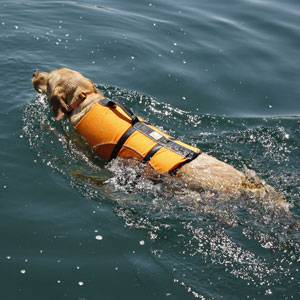
Buying a kayak, particularly your first one, is something that everyone gets passionate about. All you can think of is getting down to the waterside and safely getting on the water. But, before you get lost in all the excitement, you have something to consider. How much does a kayak weigh? A kayak’s weight is typically determined by its size and the material used to build it.
You will have to carry your kayak from your car to the water, so it is important to consider the boat’s weight. Most likely, you will have to carry the kayak from its storage position and lift it onto the roof of your car. These are all scenarios that will make you consider the weight of your kayak after the fact.
If you are reading this, you probably want to avoid struggling with excessive weight. For beginners, the first kayak you purchase must be the perfect weight for you. But how do you know what the perfect weight is?
Table of Contents
How Much Does a Kayak Weigh: Are They Light or Heavy?
Thanks to modern innovations, there are multiple types of kayaks available. It does seem like each model is designed to suit specific situations, with some having certain beneficial features over others.
Generally, a kayak’s weight is determined by the type of material used to create it. Typically, kayaks can weigh anything from 20 lbs. to 60 lbs. It is not out of place to find some kayaks weighing a lot more than that, even exceeding 100 lbs.
You need to consider your specific needs when choosing a light kayak or a heavy one.
Some of the considerations are:
- How do you plan to transport the kayak to the shore?
- Do you intend to go on rivers with harsh waves and rough winds?
- What do you plan to use the kayak for? (Fishing, light rafting, etc.)
How Much Does a Kayak Weigh: Does It Really Matter?
For most people, the weight of a product they really want to own is generally the last thing on their minds when making a purchase.
But the last thing you want to do is buy a kayak and find out that it is too heavy for you. Unfortunately, this is a mistake that tends to happen with first-time kayak owners.
Weight is important, especially if you are unable to lift heavy items.
For the most part, you should be able to effortlessly carry your preferred kayak without assistance unless you have chosen a tandem kayak.
How Do You Know a Kayak’s Weight?
It can be quite risky not to know how much your kayak weighs, particularly if you let others use it.
Before you choose a kayak, find out how much it weighs. To do this is easy. Simply visit the manufacturer’s website and search for the kayak that appeals to you.
You may not see the weight mentioned on the front page in most cases unless you select your preferred specification options.
How Does a Kayak’s Design Affect Its Weight?
The size and material used to create a kayak are important factors in how much a kayak weighs. Kayaks are made with different materials that impact durability, performance, and overall weight. Inflatable kayaks are the absolute lightest, but assuming you’re picturing a pre-constructed kayak, here are a few of the materials popularly used to build kayaks include:
Fiberglass Kayak
A fiberglass kayak is known to offer the best quality, thanks to its fast and smooth pace in the water.
Generally, it is a lightweight kayak, offering the most effective performance compared to kayaks made from other types of materials. But they tend to be more expensive because of their lightness.
Composite Kayak
A composite kayak is similar to those made from fiberglass but is generally used by professionals because they are prohibitively expensive.
Wooden Kayak
A wooden kayak is made from wood and can also be expensive, especially if the wood contains fiberglass resin. That being said, the wooden material makes the kayak heavy. And due to the makeup, a wooden kayak can be damaged quite easily, making such kayaks a bit unreliable.
Rotomolded Kayak
A rotomolded kayak is constructed using melted plastic, which is shaped into a kayak. Kayaks made from rotomolded materials are typically sold at the lower end of the price spectrum, making them the cheapest kayaks to purchase.
But they can be quite heavy because rotomolded material is anything but lightweight.
Thermoform Kayak
Thermoform is generally recommended to first-time kayakers searching for something affordable. A thermoform kayak is created by combining two molded pieces at the top and the bottom.
They are great because they tend to create kayaks with a medium weight, perfect for smaller or first-time kayakers.
Weight Classes of Different Kayak Types
Average Weight Kayaks
The intermediate or average weight kayaks are sit-on-top and sit-inside kayaks. Typically, the kayak’s weight is around 30 lbs.., topping out at 50 lbs.
They also provide extra length in their hulls to help you carry your gear around. For example, some rotomolded kayaks weigh about 50 lbs. and offer up to 12 ft of space. These are generally sea kayaks, and they enable the kayaker to drift faster with every stroke.
Additional space in this kayak weight class is also a given, as the additional length might house hatch lids that can be used solely for storage purposes. Bulkheads also exist to separate the rear and front middle of the kayak.
Fast and Lightweight Kayaks
These kayaks are made using fiberglass of composite materials. For example, a 16-foot kayak made with a combination of these materials will only weigh 55 lbs.
Generally, light and fast kayaks have lengths between 13 feet to 16 feet long. While these kayaks are light and fast, they can crack when they hit rocks.
Heaviest Kayaks
Heavy kayaks generally weigh anything from 100 lbs. and above. They can even top out at 150 lbs.
These kayaks are typically sit-on-top types with additional room to carry supplies and accessories, such as fishing rods and dry bags. The most popular types of kayaks in this weight class are fishing kayaks.
Typically, heavy kayaks are 10 feet long and 30 inches wide. They can be easily maneuvered due to their wider bottom, and it is even possible to stand on one.
Heavy kayaks are great for taking on kayak camping trips, but one obvious downside is the challenge of transporting them due to their weight. Carrying a 120-pound kayak on the roof rack of your car is not something you want to do. You will have to get a kayak trailer.
Types of Kayaks
Tandem Kayak
A tandem kayak is much heavier compared to a solo kayak as it is designed to carry two or more people. As a result, a tandem kayak tends to weigh between 50 lbs. and 70 lbs.
These kayaks are great for a family bonding trip, as they carry two or more people. If you are taking this kayak with a child, you should make sure your child has a swim vest or a floatation device at all times. Learn more about the floatation devices for children here.

Recreational Kayak
A recreational kayak is designed for flatwater paddling. This makes them best suited to leisure times on calm lakes. They tend to weigh a little bit more at 35 lbs. to 50 lbs.
Fishing Kayak
A fishing kayak tends to be heavier due to its wide beams and fully rigged design. On average, a fishing kayak weighs between 80 lbs. and 120 lbs.
Touring Kayak
A touring kayak is made for cruising on slow-moving waters. Compared to recreational kayaks, a touring kayak is a bit on the heavy side, weighing around 63 lbs. on average.
Whitewater Kayak
A whitewater kayak is designed for fast-moving streams and rough waters. Typically, a whitewater kayak is a shorter kayak in terms of length. This creates a more durable and lighter hull. On average, they weigh 35 lbs. to 45 lbs.
Inflatable Kayak
An inflatable kayak is considered the most lightweight model, as it is designed to be easily carried inside a bag. As a result, they tend to weigh between 25 lbs. and 50 lbs. If you might be interested in a lightweight option, check out some inflatable kayaks.
Conclusion
As you can see, it is vital to know how much a single kayak weighs before you go ahead with your purchase. Kayaks are categorized into different weight classes to suit a variety of purposes. This means you need to determine what you need a kayak for before choosing the right weight.



